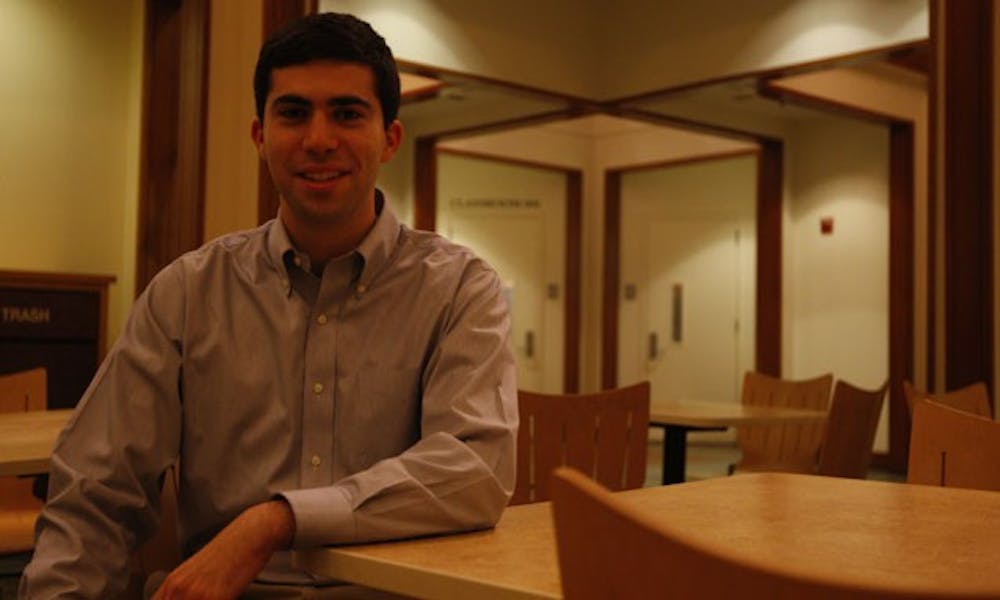Scientists have discovered that a rare genetic anomaly—an extra copy of an entire gene—causes familial chordoma, a rare bone cancer.
For Josh Sommer, a Duke undergraduate from 2005 to 2008, this revelation has personal implications. Sommer was diagnosed with chordoma, which has no cure, halfway through his freshman year. After conducting initial research, Sommer realized there was no organized, collaborative effort to combat chordoma and find a cure. As a result, he cofounded the Chordoma Foundation in February 2007 with his mother Dr. Simone Sommer to help bring together scientists and find funding for chordoma research.
Researchers from Duke University Medical Center and the National Cancer Institute recently discovered that having an extra copy of a gene called brachyury causes inherited chordoma.
“The brachyury discovery is big,” Sommer said. “It is extremely important because it opens up a whole new front in the research effort in the war against chordoma, and other cancers as well. It gives us a whole new set of hypotheses to test, and new research to do, although it is by no means an answer.”
After completing his junior year in May 2008, Sommer took a leave of absence from Duke to dedicate himself to the foundation. Sommer currently works in a laboratory at Duke under Dr. Michael Kelley, who is the first federally funded chordoma researcher.
Although other familial cancers are commonly caused by a single alteration to an individual’s DNA sequence, chordoma is the first to be explained by the duplication of an entire gene.
“What’s unique about this is that it’s not a single nucleotide change or a small insertion or deletion, but a huge copy [of a gene],” said Kelley, an associate professor of oncology and the primary researcher on the study. “That was unexpected—there was no example of that in any other cancer.”
Initially, the research team used traditional gene mapping and sequencing techniques to study the increased susceptibility of family members to chordoma, said Xiaohong Yang, an investigator in the Division of Cancer Epidemiology and Genetics at NCI and a collaborator on the project.
When this approach did not yield the desired results, scientists employed a genome-wide search for large inherited genetic alterations. Using a comparative genomic hybridization chip, which allows scientists to examine large changes in a person’s genetic sequence, researchers identified the duplication of the brachyury gene, Yang said.
“The mechanism of how we found this gene is the most important implication of our study,” she said. “If we use the [chip] to complement gene mapping approaches, it may lead to more successes in other cancer syndromes.”
Brachyury regulates the development of the notochord, which is the embryonic precursor to the spinal cord. Brachyury is often highly expressed in the tumor tissue of chordoma patients and had been indicated as a subject for further study in prior research, Kelley said.
“What was unknown was what was causing some families to have a markedly increased risk for developing chordoma,” Kelley said. “Four out of the seven families we studied inherited an extra copy of the brachyury gene, and that extra copy puts them at an increased risk for the disease.”
The second copy of the gene was not found in people with chordoma from the other three families. Sixty-five people, 21 who have chordoma, participated in the study.
Although it is unclear why some individuals with chordoma do not have the duplication, Yang said she is not surprised by the results because chordoma and other cancers have many causes.
The discovery does not represent a cure for chordoma, but Sommer remains optimistic.
“I don’t know if we can actually succeed [in finding a cure] within my lifetime, but if I didn’t think we could ultimately succeed, I wouldn’t be doing this,” he said.
Get The Chronicle straight to your inbox
Signup for our weekly newsletter. Cancel at any time.

